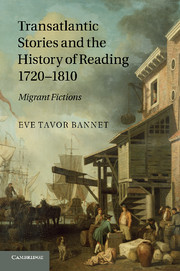Introduction: Transatlantic stories and Transatlantic readers
Published online by Cambridge University Press: 05 July 2011
Summary
This is a book about some of the forgotten, as well as some of the now more familiar, stories of the Atlantic world during the eighteenth century, and a study of how those stories became transatlantic – popular, meaningful to readers, or influential in shaping perceptions, on both sides of the Atlantic. Though written in a variety of genres, the stories that were reprinted and redeployed transatlantically were generally “founded on fact.” Broadly conceived by contemporaries as “fictional histories,” they fictionalized and personalized the history of the times. Designed to inform and instruct readers about how life was or might be conducted in the Atlantic world as much as to persuade and entertain them, they were at once fictional and “true.”
Many of the British and American narratives that were later marginalized or forgotten were heavily weighted towards the experiences and perceptions of women, of the poor, and of the déclassé. They told about the transatlantic migrations, motives, and experiences of ordinary people – stories of danger, conversion, captivity, community and amazing freedom in a multinational Atlantic; stories of servitude, of voluntary or forced migration, of flight and successive resettlements; stories about the ubiquitous violence and war; and stories rethinking conduct, the goal of return and the meaning of place. Their perspectives differ sharply from those of subsequent, traditional British or American national histories, which is one of the reasons they were ignored for so long.
- Type
- Chapter
- Information
- Transatlantic Stories and the History of Reading, 1720–1810Migrant Fictions, pp. 1 - 20Publisher: Cambridge University PressPrint publication year: 2011



